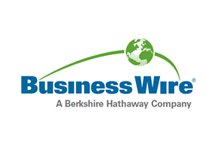Insights on the Alternating Current (AC) Electric Drives Global Market to 2027 - Rising Government Regulations and Demand of Energy Efficient Devices is Driving Growth - ResearchAndMarkets.com
The "Alternating Current (AC) Electric Drives Market - Growth, Trends, COVID-19 Impact, and Forecasts (2022-2027)" report has been added to ResearchAndMarkets.com's offering.
The global alternating current (AC) electric drives market is expected to register a CAGR of 4.4% over the forecast period (2022-2027).
Companies Mentioned
- ABB Ltd
- Danfoss
- Rockwell Automation Inc.
- Schneider Electric SE
- Siemens AG
- WEG SA
- Yaskawa Electric Corporation
- Toshiba International Corporation
- Parker Hannifin Corporation
- Fuji Electric Co. Ltd.
Key Market Trends
Discrete Industries to Grow Significantly
- AC electric drives finds robust applications across the discrete manufacturing industry, which deals with the mass production of automobiles, aircraft, defense equipment, electronic products, semiconductors, and textiles.
- The United States is currently the most attractive country for aerospace manufacturing due to excessive interest from private firms like SpaceX and Blue Origin and the US military. The country's aerospace and defense (A&D) industry increased its funding for R&D. Since 2010, the industry's R&D spending has increased, with the annual investments increased by 14%, to reach a value of USD 17 billion. The growth in the manufacturing operations of the automotive and A&D industries expected to propel demand for AC drives.
- The production process of electronics consumes a huge amount of energy. With the increasing customer demand and the ever-surging production volumes the manufacturers are adopting automation with energy efficient devices. Hence, many end-users, especially in the discrete industries, are increasingly adopting customized motors with AC electric drives.
- Furthermore, electronics manufacturing companies are expanding their manufacturing capacities across the globe. For instance, in March 2022, Intel plans to spend more than EUR 33 billion to increase it manufacturing capacities across the EU to bring various parts of semiconductor value chain and increase supply chain resiliency in Europe.
Asia Pacific is Expected to Hold Major Share
- The organizations in the region are making progress and seeing results from more reliable, efficient, and predictive processes at the plant and expect further increase in operational efficiency from investments in the industrial Internet of Things (IIoT) that connect machines and automate processes.
- For instance, in June 2022, Japanese engineering company Mitsubishi Electric Corporation said that it would spend approximately USD 2200 million on its subsidiary Mitsubishi Electric India Pvt. Ltd. to set up a new factory in the country to manufacture inverters and factory automation (FA) control system products.
- Manufacturing is one of the pillars of China's economy and is undergoing a rapid transformation as the population ages, rising labor costs, and inexpensive migrant workers are no longer sustainable. Moreover, 70% of the world's consumer electronics are made in China.
- With the emphasis on automating manufacturing processes in different industry verticals such as power generation, oil & gas, textile, and mining, end-users are increasing continuous industrial automation in production processes, enhancing the application of AC electric drives.
- Moreover, the changing environment in the region has been driving the demand for HVAC systems in commercial, institutional, real estate, etc. sectors. Also, the growing number of infrastructure projects and buildings creates demand for energy-efficient HVAC systems. Hence, HVAC manufacturers are investing in manufacturing expansion to cater to the demand. For instance, according to the Ministry of Commerce & Industry India, under PLI Scheme, 26 companies are investing 3898 Crore in AC conditioner components manufacturing in India.
Key Topics Covered:
1 INTRODUCTION
1.1 Study Assumptions and Market Definition
1.2 Scope of the Study
2 RESEARCH METHODOLOGY
3 EXECUTIVE SUMMARY
4 MARKET INSIGHTS
4.1 Market Overview
4.2 Industry Attractiveness - Porters Five Force Analysis
4.2.1 Bargaining Power of Suppliers
4.2.2 Bargaining Power of Buyers/Consumers
4.2.3 Threat of New Entrants
4.2.4 Threat of Substitutes
4.2.5 Intensity of Competitive Rivalry
4.3 Industry Value Chain Analysis
4.4 Assessment of Impact of COVID-19 on the Market
5 MARKET DYNAMICS
5.1 Market Drivers
5.1.1 Increasing Automation in Manufacturing Industry
5.1.2 Rising Government Regulations and Demand of Energy Efficient Devices
5.2 Market Challenges
5.2.1 High Cost of Installation and Maintenance
6 SEGMENTATION
6.1 by Voltage
6.1.1 Low
6.1.2 Medium
6.2 by End-user Industry
6.2.1 Oil & Gas
6.2.2 Chemical & Petrochemical
6.2.3 Food & Beverage
6.2.4 Water & Wastewater
6.2.5 Power Generation
6.2.6 Metal & Mining
6.2.7 Pulp & Paper
6.2.8 HVAC
6.2.9 Discrete Industries
6.2.10 Other End-user Industries
6.3 Geography
7 VENDOR MARKET SHARE ANALYSIS
8 COMPETITIVE LANDSCAPE
8.1 Company Profiles
9 INVESTMENT ANALYSIS
10 FUTURE OF THE MARKET
For more information about this report visit https://www.researchandmarkets.com/r/6sox4
View source version on businesswire.com: https://www.businesswire.com/news/home/20220727005470/en/




